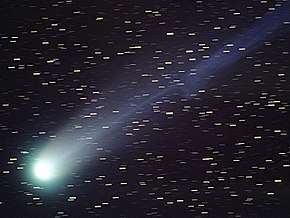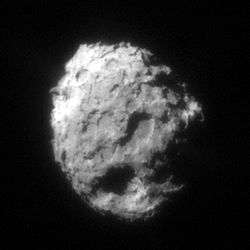C/1702 H1
C/1702 H1 (also known as "the comet of 1702") is a comet discovered by Francesco Bianchini and Giacomo Filippo Maraldi (Rome, Italy) on April 20, 1702.
| Discovery | |
|---|---|
| Discovered by | Francesco Bianchini & Giacomo Filippo Maraldi |
| Discovery date | April 20, 1702 |
| Alternative designations | C/1702 H1 "Comet of 1702" |
1702 apparition
Bianchini and Maraldi discovered the comet on April 20, 1702. The comet was a short distance above the horizon and was said to resemble a "nebulous star".
An independent discovery was made by Maria Margarethe Kirch (Berlin, Germany) about two hours later and by Philippe de La Hire (Paris, France) on April 24.
The last observation of the comet was made by Bianchini and Maraldi on May 5, 1702.
Orbit
Very similar parabolic orbits were computed for C/1702 H1 by Nicolas Louis de Lacaille (1761) and Johann Karl Burckhardt (1807).
Closest approaches to Earth
- 1702-04-20: 0.0435 AU from Earth
gollark: I mean, yes, FTL is equivalent to time travel, but I didn't mention that.
gollark: What does a warp drive have to do with this?
gollark: Like I said, if you could reliably get future information/transmit information backward in time, that would be ridiculously powerful.
gollark: Wait, presupposes that *god* can do that (which is required if said god is omnipotent), or that *people* can get future information?
gollark: Oh, and if you can get answers on yes/no questions about the future that also allows you to transmit information backward through time, obviously.
References
- Gary W., Kronk; Brian G Marsden (1999). Cometography: A Catalogue of Comets. Cambridge University Press. p. 388. ISBN 0-521-58504-X.
This article is issued from Wikipedia. The text is licensed under Creative Commons - Attribution - Sharealike. Additional terms may apply for the media files.

